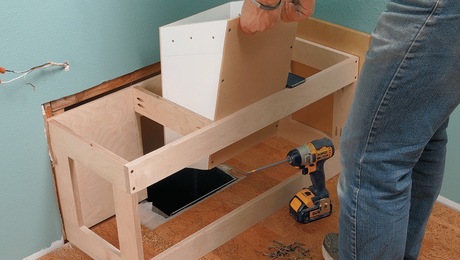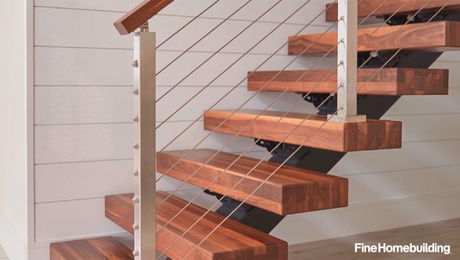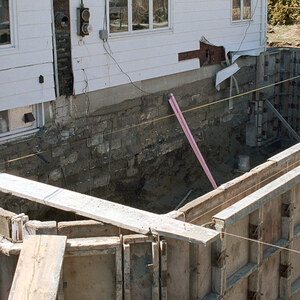Availability of borate-treated lumber in your area?
I’m getting ready to build a 26×36 garage onto my house in a few months. Through my research, I got interested in borate-treated products over ACQ for a few reasons. I was shocked at how unavailable these products are in my area (central Indiana). Most people I talked to either had no idea what I was talking about or acted like it was some kind of snake oil product that was far inferior to ACQ. Most places including the big box stores and local lumber yards either said they couldn’t get it at all; or would only order it if I would buy an entire skid. I only need 7 2x6x12′ pieces to use for sill plates. I finally found a place over an hour away that would order what I needed for ~50% higher cost than standard ACQ plus the cost of getting the 3/4 ton 4×4 long bed truck to and from. Is this “normal” for the rest of the country. I know we’re not exactly on the leading edge of technology around here… I can’t tell you how many people tried to talk me out of putting in a geothermal system (which I love, BTW). With all of the posts and articles I’ve read about green building, etc on here and around the web, I have to think that there are parts of the country where these kinds of products are more easily accessed.


















Replies
We use a lot of here in south Florida but insects and rot are everyday occurances. But, it's not for ground conteact and personally I wouldn't use it on concrete as a sole plate. it's a little less expensive then ACQ but not enough that the savings on 7 boards would buy you lunch.
Cost savings isn't the appeal... it's actually going to end up costing me quite a bit more than ACQ just due to the logistics of sourcing it. Biggest appeal to me is that it's much less corrosive to fasteners. We can use stainless for the foundation bolts; but I can't get stainless nails for my Paslode nailer and the "galv guard" nails don't have the coating to assist with driving into the manufactured LSL studs. The sills won't be at ground level: the closest corner will be 4-5" above ground and the furthest about a foot. Obviously a sill gasket would be used between the boards and the concrete. What would be your concern with use in this application over standard ACQ, which is also not rated for ground contact? I had thought about running a 2' tall strip of ACQ plywood at the bottom before starting the OSB sheeting. It will all be wrapped and then covered with vinyl siding when all is said and done, anyway.
The ACQ comes in two pallets; One FOR ground contact and one that isn't for ground contact. I'm pretty sure it's just how much "juice" they put in it.
If you use hot dipped galvanized nails you should be fine. Or, like you said, go with stainless if you're rich : D
I use GRKs a lot and they use "Climatech" which is approved for ACQ I believe.
You can check out Maze nails too, they have double hot dipped galvanized roofing nails I know.
Edit: In my area all Brown ACQ is FOR ground contact. Green is not. We use brown ACQ for sill plates.
It's probably cheaper to get a stainless steel nails if you're that worried. Stainless steel is approved to contact copper, so they're not going to corrode.
As long as your plate isn't going to be wet galvanized nails won't hurt a thing. ACQ isn't that corrosive when wet and not at all when dry.
wet vs dry ACQ
florida wrote:
As long as your plate isn't going to be wet galvanized nails won't hurt a thing. ACQ isn't that corrosive when wet and not at all when dry.
I didn't realize this. The PT lumber I've used in the past (which admittedly isn't much) always seemed "wet" even though it had been in the lumber yard for who knows how long. Would actually get a little moisture ooze when running long screws into it. I knew there was ACQ lumber rated for ground contact; but had assumed it was even more corrosive than the standard ACQ. Research may be making me more paranoid than I need to be; but this is the kind of "information" that has been steering me toward trying to source the borate stuff (see link):
http://www.loghomebuilders.org/the-corrosive-problem-acq-treated-lumber
Borates
If you want to use borates why not make your own? Google Timbor,Boracare or just borate. We use different products from the Log Home Store.
http://www.loghomestore.com/c52-borates---powdered-liquid.php
KK
"The PT lumber I've used in
"The PT lumber I've used in the past always seemed "wet" even though it had been in the lumber yard for who knows how long."
That's because most yards keep the stuff out in the weather. Which annoys the crap out of me.
I'd suggest either buying it from a place that keeps it inside, or stacking it up to let it dry for a while before you use it.
I live a ways west of you, in eastern Illinois.
There's no borate treated lumber here either. And I don't really see any reason for it.
We've switched our treated lumber over to MCA. There might still be some ACQ around - Don't know what other yards carry. But either one is fine if you use the right fasteners.
I can get either ACQ or MCA around here. Is the MCA "friendlier" to fasteners? I've been swayed at this point: just going to use some kind (ACQ or MCA) of PT lumber and the hot dipped galv nails available for my Paslode that are marked as ACQ compatible.
MCA stands for micronized copper azole. What that means is instead of using a copper salt, which saturates the wood cells (more or less) with chemically active copper ions, the copper in MCA and MCQ is "micronized". That means it's simply elemental copper ground extremely finely. Because the micronized copper isn't in an ionic form, it's less chemically active and probably less corrosive. On the other hand, for any sort of galvanic corrosion to go on, the metals need to be in contact with some sort of electrically conductive medium - typically an electrolyte solution. In short, once the treated lumber dries out, the so does the opportunity for the metals to exchange electrons and corrode. So, yeah, most PT lumber is wet when installed. It comes from the treater that way, unless you specifically buy KDAT (kiln dried after treatment) material. Sill plates should not remain wet, so I doubt you'll have any kind of long term issue with regular old treated lumber.
Any of you guys ever put a strip of 4-6" flashing over the sill plate and up the studs before putting on the sheeting just as an additional water barrier when it will be < 1' off the ground? Any detriment to doing so?
Use Hydrogap, Tyvek Drainwrap or a rainscreen siding and it will be fine.
You can put flashing underneath that if you want. The main thing is to have a drainage plane under your siding. to let your siding drain and stay dry on the backside.
FHB has an article on rainscreen siding. I like Hydrogap because it's easier and less labor-intensive, but it can be hard to find.
Edit: Oh, you said before the sheathing? Why would you do that? You don't want your sheathing to rot any more than you do your studs. I put all waterproofing over the sheathing.
I intend to wrap the outside of the sheeting as well (had just planned on Tyvec; but I'll look into the other options posted); but thought the membrane on the sill plate and part-way up the studs would be cheap additional insurance considering how close that corner will be to the ground.